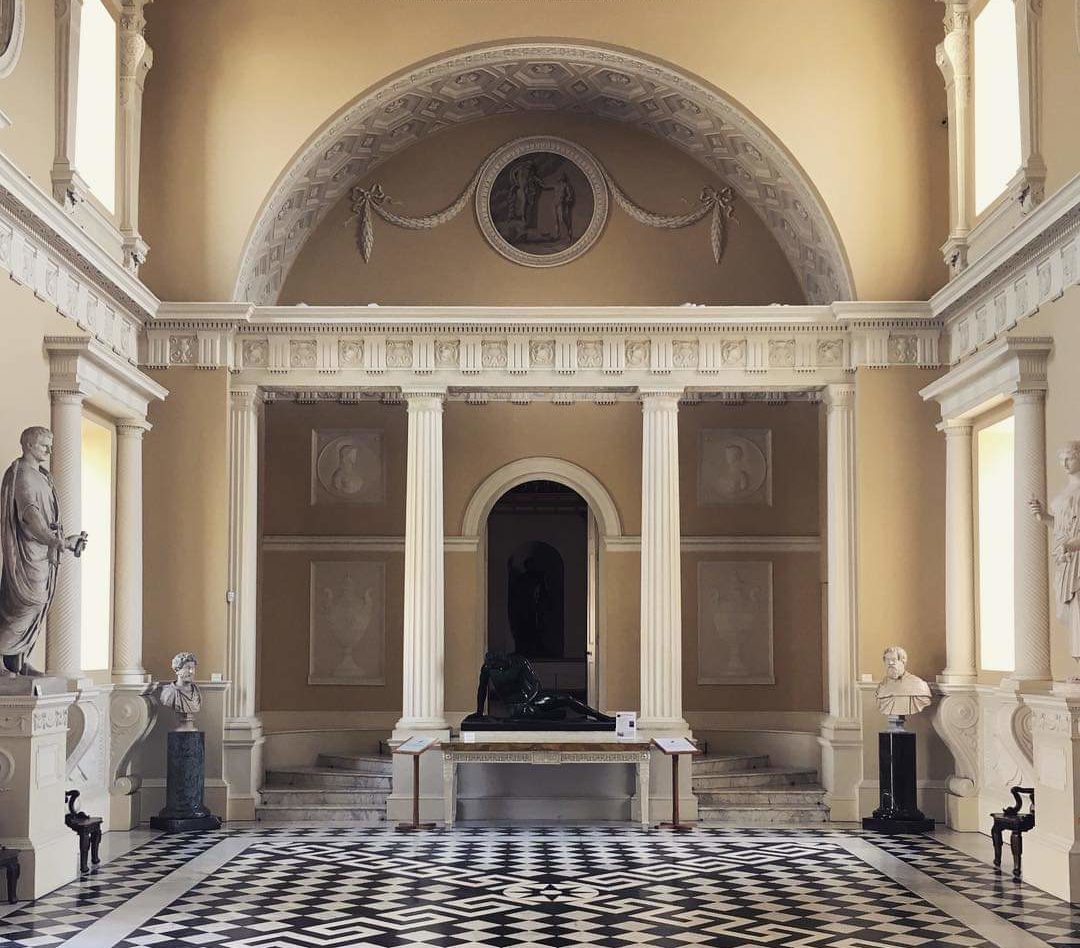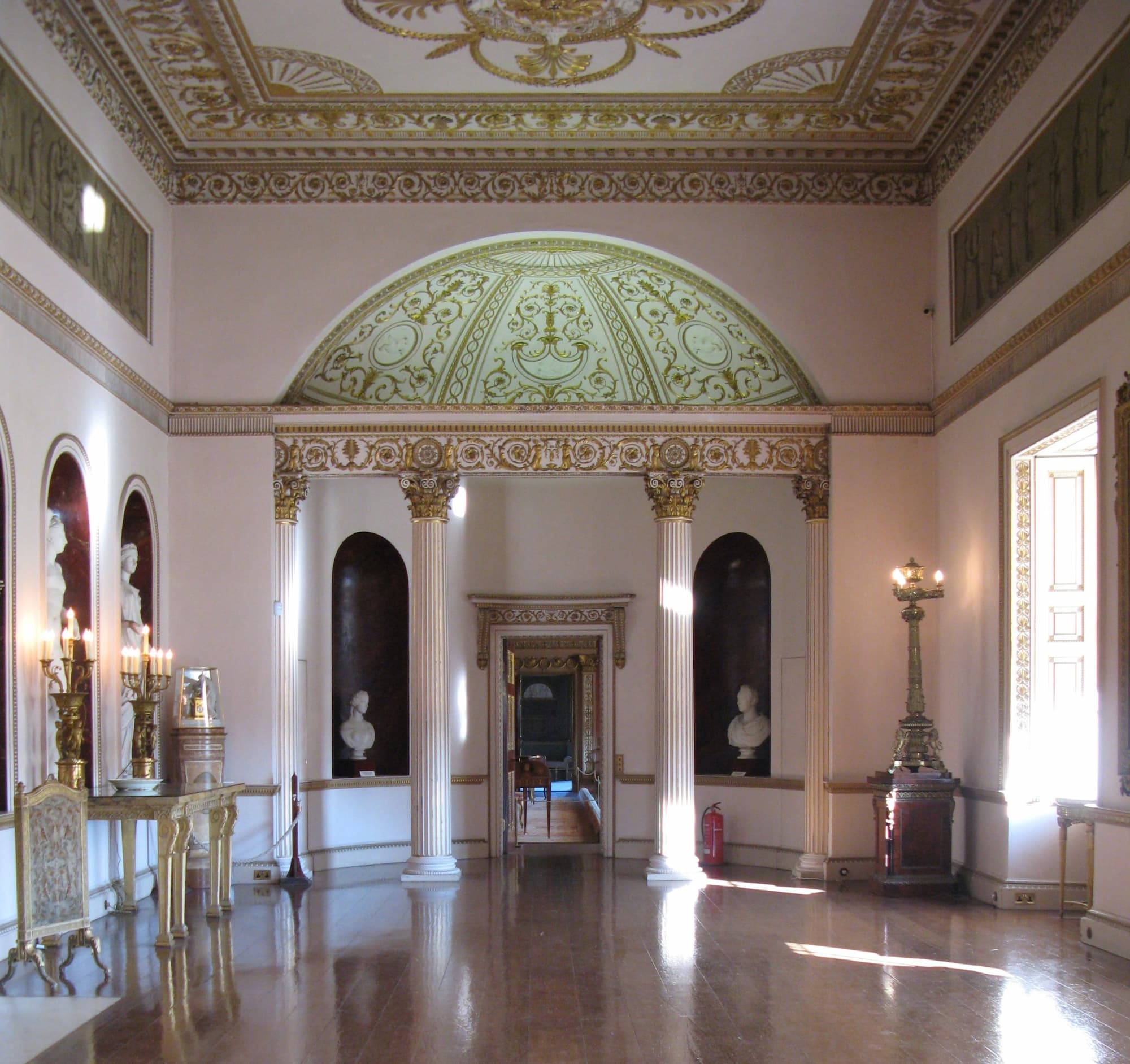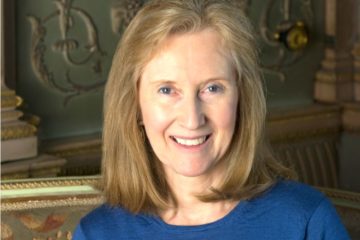Syon House: Medieval Abbey to 18th-Century Neoclassical Masterpiece
Royal Oak invites you on a private tour and discussion of Syon House as we explore the house’s remarkable interiors and important works of art with architectural historian Oliver Gerrish and interior designer and consultant Lady Caroline Percy, who grew up at Syon surrounded by the historic interiors and important objects d’art.
Syon was originally founded by Henry V as a medieval abbey for nuns and priests who would say perpetual prayers to save the soul of the King’s father. After the Dissolution, by 1547 it was turned into an Italian Renaissance style private residence. Henry Percy, 9th Earl of Northumberland, acquired the house in 1594 and Syon remains the Duke of Northumberland’s London residence today.
During the 1760s, Robert Adam designed five large rooms on the west, south, and east sides of the house for the 1st Duke of Northumberland, who wanted an updated house in the style of a Greco-Roman palace. These interiors, filled with Italian antiquities, remain a stunning tour de force marking the designer’s career.
The Great Hall is based on an ancient Roman basilica with Doric columns and Adam designed pedestals showcasing ancient statues. Syon’s Ante Room features 18th-century green scagliola and ancient Roman columns, while the walls are covered with gilded trophy panels. Adam designed the Long Gallery as a Roman library—continuing the classical theme—with gilded and painted pilasters and classical stuccowork. The Red Drawing Room’s Spitalfields-silk walls frame pier tables, also designed by Adam, that incorporate antique Roman mosaics and highlight his elaborate ceiling depicting 239 classical figures.
Syon House was modernized during the 19th century, and the exterior was reworked in the Bath stone seen today. The house was opened to the public by the Percy family beginning in 1951, and the Duke of Northumberland continues to improve the house and landscape.
We will have a tour of Syon’s remarkable interiors in an exclusive video filmed for Royal Oak and a discussion with Oliver Gerrish and Lady Caroline Percy.

Great Hall with gladiator

Dining Room at Syon House





